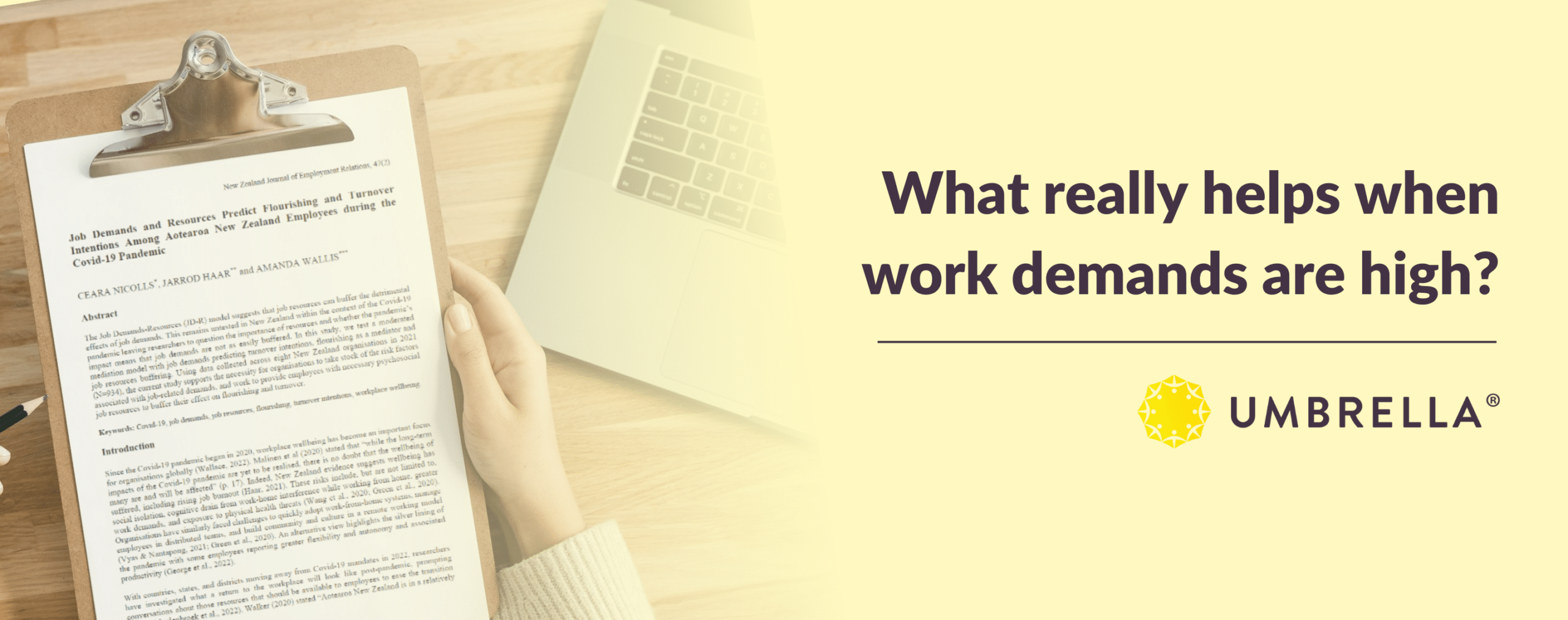Did you hear? We recently published new research in the New Zealand Journal of Employment Relations in partnership with Professor Jarrod Haar from Massey University. For those of you with an appetite for journal articles and all of the nitty-gritty statistics, you can download the full article here. And, for those wishing to steer clear, or simply want the executive summary, read on.
This research was powered by Umbrella Wellbeing Assessment data, collected across eight organisations from nearly 1,000 workers across 2021. We chose to study what happened in 2021 because we wanted to capture worker experiences at the height of the COVID-19 pandemic. While (we hope) pandemic times will stay firmly in the past, it’s important to understand how workplaces operate during times of rapid change, upheaval and disruption, and the workplace factors that impact on employee wellbeing. After all, pandemic aside, change is here to stay.
To dig into this, we examined how people responded to a range of questions assessing the resources they have in their jobs (things like manager support, team cohesion and coworker support), and the demands they experience in their jobs (things like workload pressures, poor change consultation and unclear roles). We then assessed how those factors explain, or buffer, how well people feel in themselves (flourishing) and the likelihood that they’ll quit their jobs in the future.
This research model is based on a theory that is big in the world of organisational psychology, called the Job Demands-Resources model. In simple terms, it suggests that, if job demands are not balanced by appropriate job resources, we will experience constant overtaxing, leading to stress, quit intentions and poorer wellbeing.
So, what did we find, and what really helps when we feel taxed by our job demands during uncertain times? Well, organisational resources appear to make a big difference for understanding how people flourish, and what keeps them in their jobs.
When job demands are high, these job resources are associated with higher wellbeing, and lower quit intentions:
- Manager support. For example, “I can rely on my line manager to help me out with a work problem.”
- Co-worker support. For example, “I get help and support I need from colleagues.”
- Job control. For example, “I have choice in deciding how I do my work.”
- Team cohesion. For example, “There are high levels of trust in my team” and “Generally, there is good communication between team members.”
In the paper, we talk about just how important it is for organisations to take stock of the risk factors associated with job demands, as well as the job resources that are present – or lacking – in their work. This means taking psychosocial risks seriously, and identifying them early, especially during times of high change.
If you want to learn more, you can find all our other research here – including our latest research report on mental safety in Aotearoa New Zealand. And, if you’d like insights like these for your organisations using our Wellbeing Assessment, Psychosocial Risk Assessment, Wellbeing Pulse or a custom survey designed just for you, we’d love to talk. Our team of researchers are trained in psychological science and passionate about using data to create mentally healthy workplaces. We’d love to connect!



